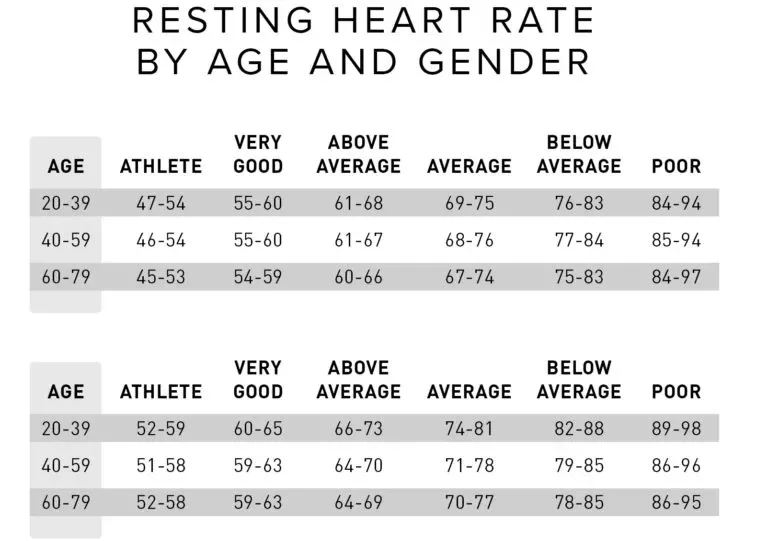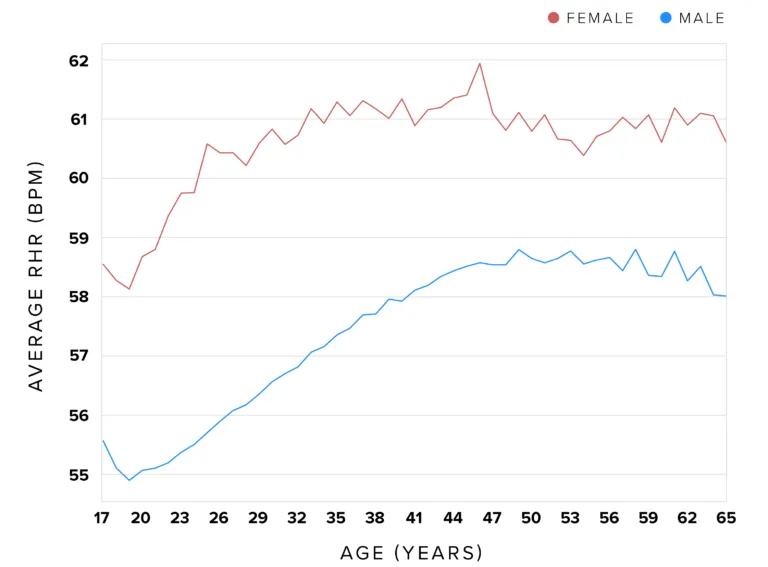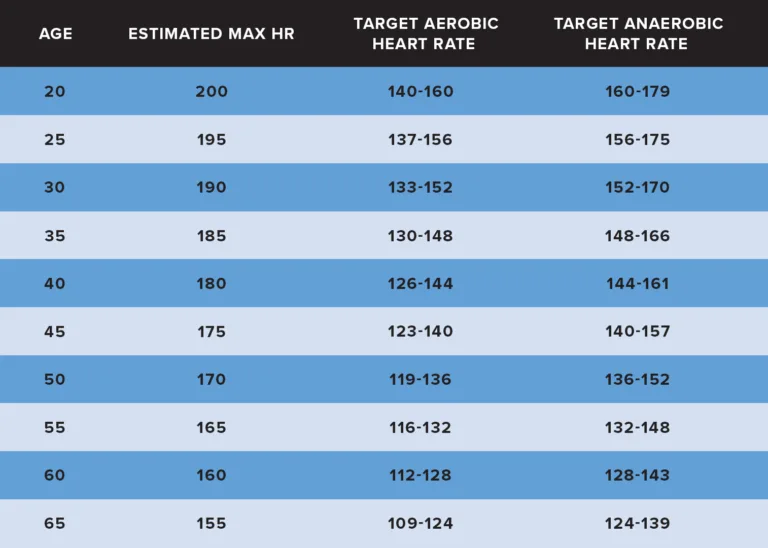Topics
- Article
- Health & Wellness
- Heart Rate
What’s a Normal Resting Heart Rate for My Age?

As we age our normal resting heart rate decreases, then increases. Find out how and why this happens and ways to maintain a healthy heart rate throughout your life, plus how WHOOP can help.
What is a Normal Heart Rate?
Our normal heart rate changes as we age. A 10-year-old’s heart beats between 70 and 110 beats per minute while an adult's is considered normal anywhere from 60-100 bpm, according to the American Heart Association. Children and teens have faster metabolisms than adults, in addition to having smaller hearts that must work harder than adult hearts. As for adults, our resting heart rate (RHR) increases until around 40 years old and then levels off. It’s normal for a 20-year-old to have a slightly higher pulse than someone in their 60s. An average 20-year-old woman has a RHR 74-81 bpm, while a woman in her 60s has an average RHR between 70-77 bpm, according to the US Department of Health and Human Services. Athletes on average have lower heart rates than people in their age brackets. Their RHR may dip to 40 bpm.

RHR by age and gender for the average adult (men above, women below), based on data from the US Department of Health and Human Services.
WHOOP members of all ages generally have a lower RHR than what the AHA considers average for their age and gender. This is likely because WHOOP members tend to be athletes or people interested in monitoring their health, so it’s not surprising that their RHRs are lower than the norm. The average resting heart rate for women wearing WHOOP is 60.7 bpm, while for men it's 56.9 bpm.

WHOOP members of all ages and genders have lower RHR than norm.
Maximum Heart Rate Decreases as We Age
The heart, like the rest of our muscles, weakens as we age. It becomes stiffer and less able to pump blood through your body, which means it can no longer beat as fast during physical activity or times of stress. Your maximum heart rate declines, and the heart rate you target when you work out also decreases. One of the easiest ways to calculate your max heart rate is to subtract your age from 220. Using this formula, a 40-year-old’s max heart rate is estimated at 180 bpm. Women may want to use the Gulati formula (206 - 0.88 x age) instead for a closer approximation. Using this formula, a 40-year-old woman has a max HR of 170 bpm. You can target specific heart rate zones during workouts. During an aerobic workout such as running, you may want to stay between 70% and 80% of your max heart rate to get the aerobic benefit. At age 40, your target heart rate for an aerobic workout would be from 126-144 bpm. When you’re doing short anaerobic workouts, you’d want to target an anaerobic HR between 80-90% of your max heart rate. At 40, your anaerobic heart rate is roughly from 144 to 161 bpm. Keep in mind, the older we get the longer it takes for our pulse rate to increase when we exercise, and to slow down after exercise.

Your max heart decreases as you age, and with it, your target aerobic and anaerobic heart rates.
Improve your normal heart rate at any age
If your heart is healthy, you can maintain and improve your normal heart rate through exercise no matter your age. Aerobic exercises such as running or cycling (or walking fast if you’re not able to do either) are often the best option for building cardiovascular strength. Besides exercising regularly, behaviors that support a healthy heart rate include:
- Drinking plenty of water
- Avoiding alcohol
- Limiting caffeine and nicotine
- Following a balanced diet
- Improving your sleep consistency
- Relaxation exercises such as guided breathing, meditation and yoga
Monitor Your Normal Heart Rate with WHOOP
WHOOP monitors your HR 24/7, helping you to better understand your normal heart rate and learn how your actions can affect it. Additionally, WHOOP measures your resting heart rate each night using a dynamic average weighted towards periods of slow wave sleep. This is when your body is most at rest, which creates the most consistent and reliable readings. By monitoring your activities you can see your heart rate in real time (as well as the percentage of your max heart rate), know what zone you’re in, and decide when to push yourself or ease back. It also shows your strain building and lets you know if or when you’ve hit the desired amount.